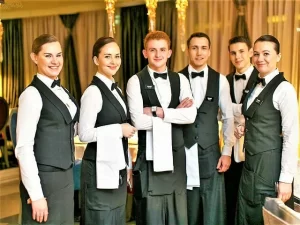In the fast-paced and ever-changing world of the hospitality industry, some trends stand the test of time and continuously captivate guests with their nostalgic allure. Vintage and retro styles, inspired by the aesthetics of bygone eras, have made a resounding comeback in hotels, restaurants, and other hospitality establishments. This article explores the enduring appeal of vintage and retro themes, how they evoke nostalgia and create memorable guest experiences, and how businesses are incorporating these styles into their modern offerings.
- The Allure of Vintage and Retro Styles
Vintage and retro styles transport guests back in time, evoking the charm of earlier decades and connecting with their emotions and memories. Whether it’s the elegance of the Roaring Twenties, the mid-century modern vibe of the ’50s and ’60s, or the funky and vibrant look of the ’70s, each era brings a unique ambiance and sense of nostalgia.
- Creating Memorable Guest Experiences
a. Ambiance: Hospitality businesses adopting vintage and retro styles infuse their spaces with a distinct ambiance that sets them apart from contemporary establishments. The carefully curated décor, furnishings, and color palettes transport guests to a different era, immersing them in a charming and unique atmosphere.
b. Emotional Connection: Nostalgia is a powerful emotion that creates a sense of comfort and familiarity. Guests who experience nostalgia during their stay are more likely to forge a lasting emotional connection with the establishment, leading to increased guest loyalty.
c. Themed Experiences: Vintage and retro styles lend themselves well to themed experiences, allowing hotels and restaurants to host retro parties, speakeasies, or vintage-inspired celebrations that delight guests and create unforgettable memories.
d. Instagram-Worthy Moments: With the rise of social media, guests seek aesthetically pleasing and Instagram-worthy settings. Vintage and retro décor often provides the perfect backdrop for guests to capture and share their experiences online, inadvertently becoming brand ambassadors.
- Incorporating Vintage and Retro Elements
a. Interior Design: Implement vintage elements through carefully chosen furnishings, wallpapers, retro-inspired artwork, and lighting fixtures that capture the essence of the chosen era.
b. Uniforms: Staff uniforms can be designed to reflect the vintage theme, with retro-inspired outfits that complement the overall ambiance of the establishment.
c. Menus and Table Settings: Restaurants and bars can embrace vintage design in their menus, fonts, and table settings, creating a cohesive dining experience that matches the décor.
d. Vintage Technology: Incorporate vintage technology pieces like rotary phones, typewriters, or retro-inspired record players in common areas, providing guests with a playful and nostalgic touch.
- Blending Vintage and Retro with Modern Comforts
While vintage and retro styles bring undeniable charm, it is essential to strike a balance by integrating modern comforts and amenities. Guests still expect contemporary conveniences such as high-speed Wi-Fi, smart TVs, and luxurious bedding, even in a vintage-themed setting.
Conclusion
Vintage and retro styles have proven their timeless appeal in the hospitality industry, attracting guests with their nostalgic charm and distinctive ambiance. By thoughtfully incorporating vintage elements into their design, establishments can create memorable guest experiences that resonate on an emotional level. Vintage-themed spaces provide an opportunity for guests to escape the present and immerse themselves in the magic of a bygone era, even as they enjoy modern comforts and services. With the enduring allure of vintage and retro styles, the hospitality industry continues to weave a tapestry of nostalgia and modernity, offering guests an unforgettable journey through time.






